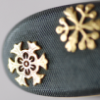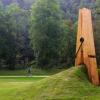Leaderboard
Popular Content
Showing content with the highest reputation on 08/10/2021 in all areas
-
Hi all, I am trying to find a good setup to make acceptable photographs of nihonto. I'm now using an acrylic table, lying on top of a darkened (sword-sized) box. Still experimenting with the ideal angles for lighting. My "model" is a jumonji yari, as it is relatively small and light. I found that it is particularly challenging to get the lighting right for these, especially when the goal is to capture the entire blade including nakago. I made this image by merging two separate photographs, one with the lighting from the sides and one with lighting from the front and back. It is quite a bit of work to make the merge work, so I would prefer a solution where the lighting captures the details of the yari from all directions. But the more lights I use, the higher the risk of unwanted glare or overexposure on particular areas. Work in progress I guess! I'm looking for feedback on the style of photography, and for ideas to bring out the best from a piece with such a complicated shape. Technical tips and tricks are welcome too, of course! I feel something is "missing" but can't quite figure out what is it is. Mark2 points
-
Hi everyone, Its been a while but glad to see that the familiar folks are active on the board! Went to the SF sword show this weekend and had a blast. Missed out on some gems specially a katana that Grey and Mark had at the table. Was gone by the time I got back from getting more funds but that's how it goes. Did get 2 new swords: Wakizashi is signed Iga no Kami Sadatsugu (mid 1600) rated wazamono. koshirae and shirasaya included. Katana is mumei but shows alot of activity on the hamon. Potentially Ichigo? Met a lot of friendly faces. Andy Quirt is awesome. He saw me walking around with my son on Saturday. When I went back Sunday to purchase some swords, he gives me a tsuba to give to my son for his collection. Not overly crowded but seems busier compared to the last one in 2019.2 points
-
2 points
-
Well, I can attest that the gunto is not a fake. There are others here who are more expert at that like @Stegel and @Shamsy, but it's legit.2 points
-
Glad you enjoyed it. It was filmed on Okinawa in 1960, all the extras were Marines and Japanese or Okinawans, and it appears most of the Japanese weapons and equipment were real. A few glitches with the Japanese using US small arms, but for my money the portrayal of the appearance and behavior of the Japanese Army was right on. The sword scene has haunted me since I saw the movie as a kid in the sixties, and in some ways spurred my interest in swords. Who were these people who still fought with swords in the 20th Century, who made suicidal charges, and deliberately crashed airplanes into ships? Steve2 points
-
Please be sure that the interpretation on the page has a few misunderstandings. 1. The kanji 書 in “Ninteisho (認定書)” does not mean calligraphy but only means writing/paper. 5. 當協會 (To-kyokai) is not “the Tokyo branch” but “This/Our organization”.2 points
-
2 points
-
1 point
-
Thanks Bojan! Yours is one of a growing list of gunto with numbers on the fittings that don't match the number stamped on the blade. They support the concept that then stamped numbers are not fitting-shop numbers, but rather an Army inspector/tracking/serial number of some sort.1 point
-
My guess is “源盛定作”. But the sword as also the mei looking odd….I’m strongly suspect it’s a fake!1 point
-
Barry the swords were all mumei koto katana and juyo to specific schools. Tegai, Taima, Hosho, Shikkake, Senjuin with multiples of each. One of the juyo hosho was signed but just gold attribution and Hosho likely had other characters removed at some time). One the Shikkake did have a Norinaga attribution on the sayagaki but not on the Juyo Zufu.... Hope that helps.1 point
-
I've seen it done in both traditional measurements and in cm. I don't know if there was a mandate to use metric or traditional, or if it was left to the person in charge of the shinsa. It seems that nowadays they prefer to use traditional units of length. The word "centimeters" ends up being long because it has so many syllables (or, mora) in Japanese.1 point
-
Welcome to both of you. You have to learn the language in order to understand the conversation. Here are some links to glossaries of sword terms: https://www.samuraimuseum.jp/shop/glossary/ http://www.japaneseswordindex.com/glossry.htm1 point
-
There's a chap on YouTube called Walter Sorrells who has done a video about this. He also recommends watching Part 1 of his "How to Photograph Knives" mini-series. HTH Jon H1 point
-
I’ve only got these two, I’m not sure if there’s anything better: https://www.amazon.co.uk/Japanese-Spears-Polearms-Their-Japan/dp/1901903567#immersive-view_1628586014813 https://www.abebooks.co.uk/servlet/BookDetailsPL?bi=30744045923&cm_sp=snippet-_-srp1-_-tile1&searchurl=ds%3D10%26sortby%3D20%26tn%3Djapanese%2Bpolearms1 point
-
Not exactly a new member but a wayward member back after a few years away. Looking forward to these posts again!1 point
-
With no Kikusui on Habaki or Nakago it's difficult to classify this one. If you are buying a Minatogawa Shrine sword you don't want any asterisks next to it. This has also been listed for some time, usually Minatogawa Shrine swords sell very quickly as demand is always high.1 point
-
Thanks, looks to be painted on to me. Matches the 2" 二二" you can see on the chuso.1 point
-
Just watched it Steve, thanks for the recommendation! The Pied Piper of Saipan really pulled off something special. He claimed that he talked in 1,500 troops and civilians. A critic claimed it was half that much ..... Ha! so 750? Don't know any other guys who could claim that! The movie made him look much older than his 18 years of age. One scene with a circle of officers around a general. One of the guys had a leather-covered saya ... I think it was @16k's Mantetsu!!!!1 point
-
Thank you for the translation Steve! Thank you for the date information Bruce! I started searching Ishihara Yoshisada on the forum and google and ran across your stamp survey database. I went back and picked up the sword Sunday morning. The first in my collection. I took some more images to add to the thread for future references. On closer look, I can see the yokote faintly peeping through.1 point
-
Interesting to see the section of the lotus root, Kyle. It might very well have been the inspiration, Roger j1 point
-
If it's 辰月鬼宿日 ,then should be 农历3月23日,1943.4.27 in the Gregorian calendar.1 point
-
1 point
-
I found this one mounted as a dart/Javelin. It seems to be a smaller sized yari, not a large one like mine. https://www.e-nihontou.com/products/detail/3021 point
-
1 point
-
Never mind Steve, I found him. He is seller GDME; here is one of his listings, and the others can be found easily. https://www.ebay.com/itm/384240123111?hash=item59767efce7:g:EJkAAOSwElhfTkwr1 point
-
Many smiths sold blades to the open market as well as to the military. So not unusual at all. Though not dated, the large Seki stamp puts your blade, most likely in 1942. They have been found in the range of 1940-1944, so those dates are possible too, but the massive majority of the dated blades we've found with this stamp are dated 1942.1 point
-
Thanks for the complements and the exchange info. I've been having a problem with PayPal taking a larger exchange cut and then buyers having to pay again when asking for the price in US and coming up short so this way they can see they are sending me exactly what I want in Canadian instead for the US dollar being up or down as well as PayPal exchange being different than The Bank Of Canada. Hopefully someone will grab it soon before I have second thoughts and keep it. Soon I won't need the money anymore due to payment coming for another sword and I'll probably pull it. Most of the blades by this smith sell for more than $1 000 000 Yen on AOI sword museum and those sales were many years ago. Cheers1 point
-
石原義定作 Ishihara Yoshisada saku It's the swordsmith's name: "made by Ishihara Yoshisada". WW2 swordsmith.1 point
-
1 point
-
1 point
-
High shinogi is seen in Yamato and in the schools inspired by it (we find some in Mino) but it is not an absolute rule, we also find some in Bitchu Katayama. However it happens that the nihonto meikan quotes a Noritsune in this school who worked during the OEI era, as the sugata seems to correspond (nagasa, sori, kissaki), it is a possibility. Frankly I don't see this sword being from the Kamakura period.1 point
-
Can we get a view of the entire blade taken straight on? So we can see the overall shape (sugata). It looks like it has a fairly weak sori (curvature). Also, the hamon looks fairly interesting. My impression is that the blade is traditionally made and likely late Edo. A picture like this would be helpful:1 point
-
Thanks Bob, this blade and the other I have, a Katana, were found in garage sales....so I was happy to save them and learn from them. Kind of like the first car you bought, it was a POS, but it was yours and you always remember it. I will one day buy a quality blade, but for now I will enjoy these and possibly learn more of their history. This website is a wealth of information!1 point
-
It seems like a very interesting tachi. As you said it seems to have signature Noritsune - 則常. However I think all recorded Noritsune smiths predate 1300, and I don't think this is as old. I do think Early Muromachi (c. beginning of 1400's) might be good viable age guess for this based on the pictures. I am liking the shape but unfortunately the condition might be bit lacking. Hard to estimate from the pictures but I am not sure if the hamon has changed a lot or if it was made in that way. I would think this tachi is in original length (possible slight machi okuri) and bottom hole being original and upper one added for katana style mounting. I think this is worthy of further research1 point
-
Below is another post that you made about the same sword. The post is edited for brevity.1 point
-
Welcome aboard, Allen. Feel free to ask questions, as there's a lot to learn.1 point
-
Hello all, been a lurker for a bit. Just returned from a long absence from Nihinto. I have two tired blades that I had gotten many years ago....looking forward to exploring this world again. Allen (Dallas)1 point
-
Jack, Not an NCO. It's a Type 98 Japanese Officer gunto. The cloth (ito) wrap is missing. For $200-300 the owner can get a nice re-wrap done. The leather covered saya (scabbard) is often found on older family blades re-fitted for the war, so it would be great to see pics of the nakago (tang) for a signature, if there is one. The pics are too blurry to see if there is a wooden peg in that hole in the handle. If so, simply have him push the peg out and the handle, with handguard slides off.1 point
-
Mark Jones, who is a member here, runs the Chicago show and he and his family do a wonderful job. I am sure that he could provide more information than the typical table holder.1 point
-
Hello Larry - you are correct. Kanemoto 兼元. Beware of forgeries. Kanemoto is known as one of the most forged signatures among all smiths.1 point
-
From the shape: Nanbokucho, Momoyama or Shinshinto. Now elimination begins: From the Boshi: Ichimai with long kaeri. Koto: Go/Sa school. Momoyama: Yasutsugu, Horikawa school, Shinkai. Hamon: angular (box-like) choji in nioi-deki with profuse tobiyaki, long ashi. No direct koto hit. Hadori is a little hard and follows a notare pattern while the work is executed with angular ups and down. Hada: standing out itame with nie and chikei. Soshu vibe to it. The combination of the boshi stucture, jihada and choji doesn't fit neatly in any obvious Koto box. The work feels one level above shinshinto. Condition: There is either a slight machi-okuri, or none at all. This points to a sword made with nanbokucho sugata in later period length. It is probably ubu, with a second mekugi ana added either to fit a new koshirae or done at the same time the signature was erased to appear koto. Near the Nakago, the hamon begins in a shinto-like fashion. All of this leads me to a Momoyama period smith. Out of these, The Horikawa and Yasutsugu school were some of the most prolific. They have some work compatible with the shape of the boshi, hada and box-like choji. There is a certain koto renaissance inspiration to the work with mix-and-match of the five gokaden. The sword is well executed with a lot of jinie and active hamon which feels slighlty contrived, something with you often see in these koto revival work. This brings me far from my area of focus, but I'll bite: Idea 1: Iga no Kami Kinmichi Idea 2: Yasutsugu1 point
-
1 point
-
Welcome Ken. As a new starter myself....... Ditto to what Charles said! Using the search function on the forum reveals a huge store of knowledge, but if you can't find what you're looking for, the members here seem to have infinite patience with answering questions. Like Charles, my experience here is limited, but when I've asked for opinions, I've had lots of differing ones which is really useful to get different views - it's great for learning Cheers, Jon1 point
-
Welcome Ken! I know from my limited experience so far on this board that the members here are great with answers to questions. There is a wealth of experience here, and the members seem to come from every level of experience. I think you will find any time spent here is time well spent. In this hobby, I would rather spend time than money, and a well asked question might save you a lot of grief with any future purchases!1 point
-
Dear Dan. Bear in mind that a large number of yari and naginata spent their lives being carried to and fro from the home province to Edo. I don't think functionality carries as much weight, excuse the pun, as presence. All the best.1 point
-
Here is a small summary of first 50. Some info is missing from this like beginnings of many of the first 15 as I don't know the correct names of people except Katō Kiyomasa. Probably an error of two in the mix but I hope it helps. 1. Katakama-yari - Spear of Katō Kiyomasa - mumei 2. Ōmi-yari - Spear of Katō Kiyomasa – mei: Bishū Osafune Sukesada (1504) 3. Su-yari – mei: Tagami saku? 4. Jūmonji-yari – mei: Jakushū kore jū Munenaga 5. Yari – mei: long mei… 6. Su-yari – mei: Monju Kanehisa saku 7. Nihongō – (one of three great spears) mumei (attribution to Kanabo not mentioned here) 8. Yari – Nagayoshi saku 9. Yari – Tonbogiri (one of three great spears) – mei: Fujiwara Masazane saku 10. Yari – mei: Sanjō Yoshihiro 11. Ōmi-su-yari 12. Yari – mei: Nanto Kanabō Hyōe no Jō Masatsugu 13. Yari – mei: Hiromitsu 14. Jūmonji-yari – mei: Kanewaka 15. Jūmonji-yari – mei: Kanabō Saemon no Jō Masasada 16. Hirasankaku-yari – mumei Yamato Kanenaga 17. Yari – mei: Bishū Osafune Norimitsu (1477) 18. Yari – mei: Bishū Osafune Tadamitsu (1484) 19. Yari – mei: Bishū Osafune Tadamitsu (1489) 20. Yari – mei: Tadamitsu 21. Yari – mei: Bizen no Kuni jū Osafune Hikozaemon Yoshimitsu (1483) 22. Ōmi-yari – mei: Bishū Osafune Norimitsu (1488) 23. Yari – mei: Bishū Osafune Koremitsu (1495) 24. Ōmi-yari – mei: Fujishima Tomoshige 25. Yari – mei: Uda Kunitsugu saku (1485) 26. Yari – mei: Muramasa 27. Yari – mei: Muramasa 28. Ōmi-yari – mei: Nagayoshi saku 29. Ōmi-yari – mei: Yoshisuke 30. Ōmi-yari – mei: Sōshū-jū Sukehiro 31. Jūmonji-yari – mei: Kanabō Masazane 32. Kama-yari – mei: Nōshū Seki jū Kanesaki 33. Yari – mei: Nōshū Gifu jū Daidō (1585) 34. Yari – mei: Jōshū Umetada saku (1593) 35. Yari – mei: Sagami no Kami Fujiwara Masatsune Nyūdō 36. Yari – mei: Masatsune 37. Yari – mei: Hizen no Kuni Tadayoshi 38. Yari – mei: Hizen no Kuni jū Musashi no Daijō Fujiwara Tadahiro 39. Ōmi-yari: Heianjo jū Kunimichi saku (1612) 40. Yari – mei: Nagasone Okimasa 41. Jūmonji-yari – mei: Yamashiro no kuni Shimosaka saku 42. Sasaho-yari – mei: Yoshū jū Yasuyoshi saku 43. Ōmi-yari – mei: Minamoto Masayuki (1845) 44. Kawarimi-yari 45. Kikuchi-yari - mumei 46. Kama-yari – mei: Biyō Osafune jū Yokoyama Sukekane saku kore (1867) 47. Ka-yari (Kago-yari?) – mei: Sasshū jū Oku Motohira saku 48. ??? Tsukikama-yari 49. Fukuro-yari – mei: Nobukuni 50. ???1 point





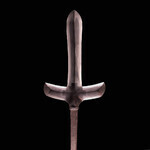

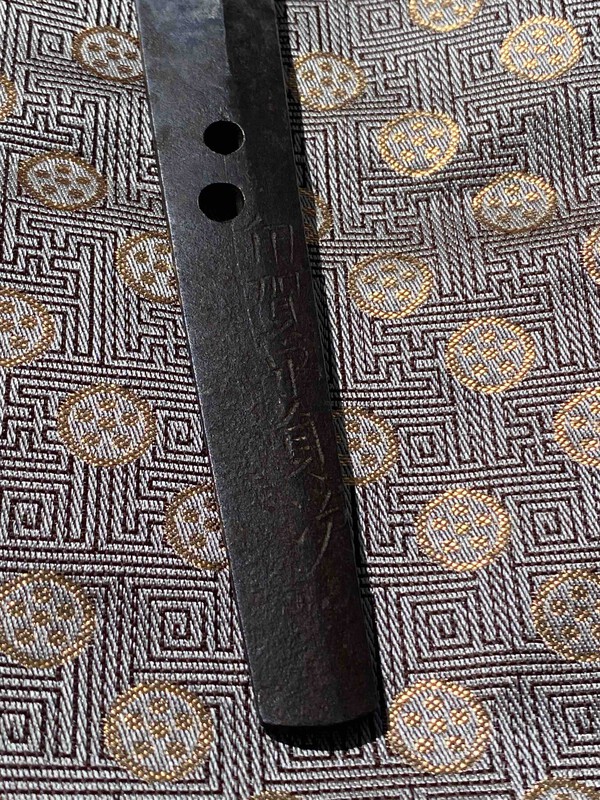





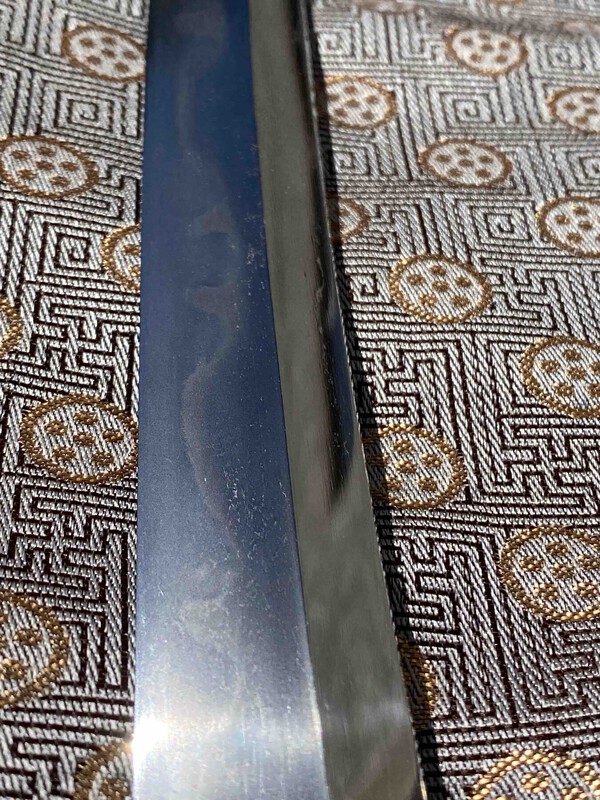

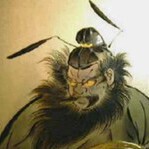









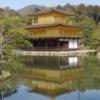



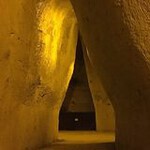









.thumb.jpg.bc10b59027a00aa142dce0349f3ba9e0.jpg)


